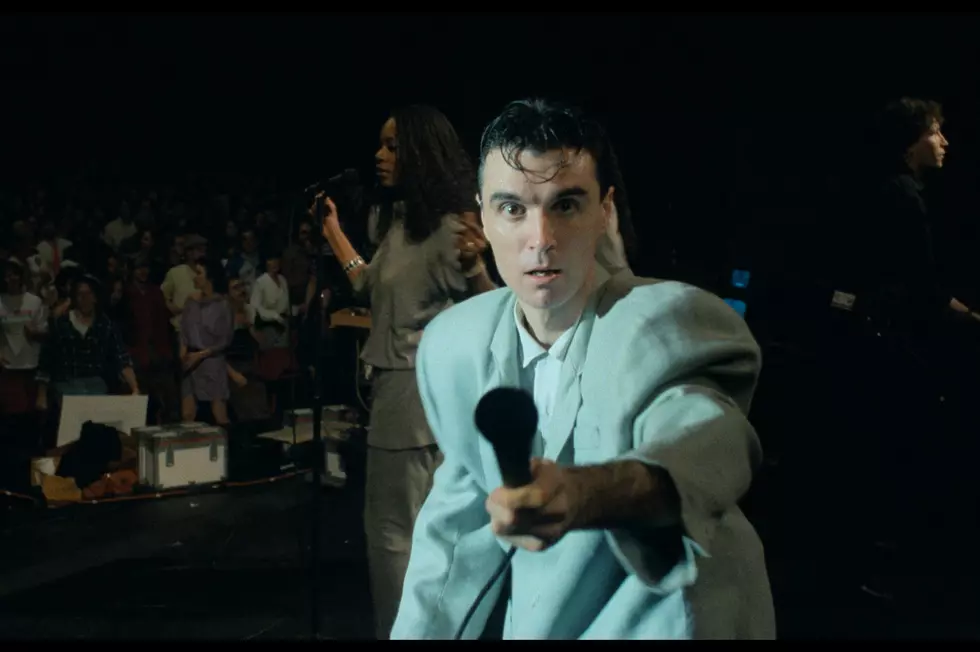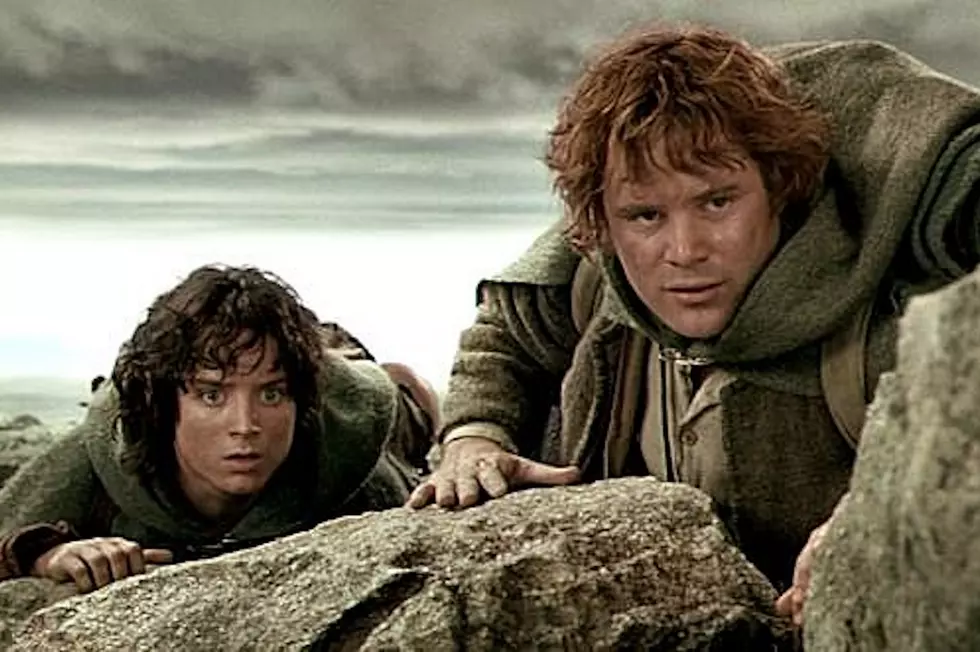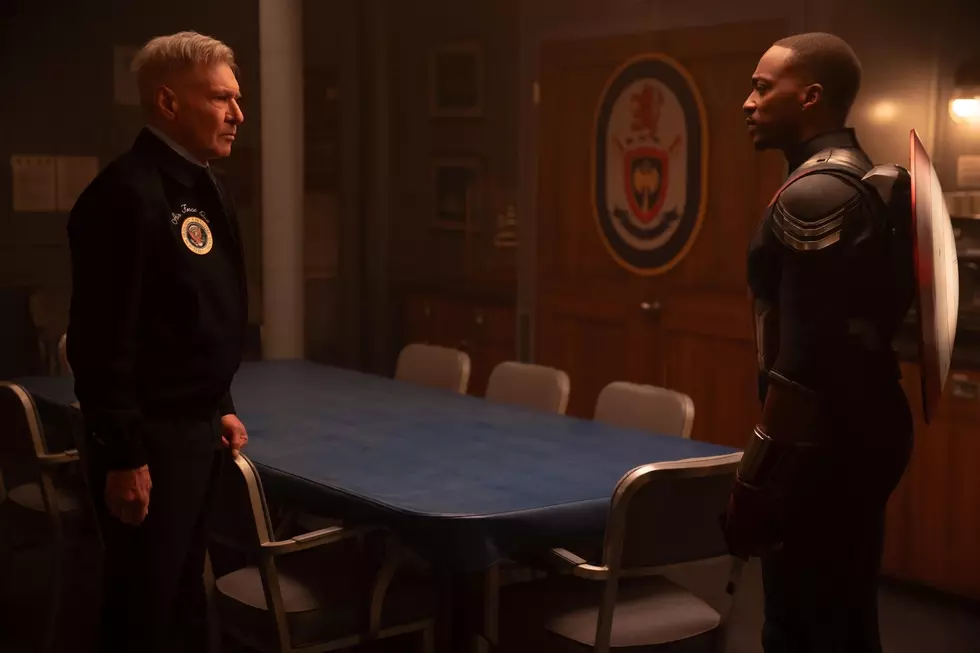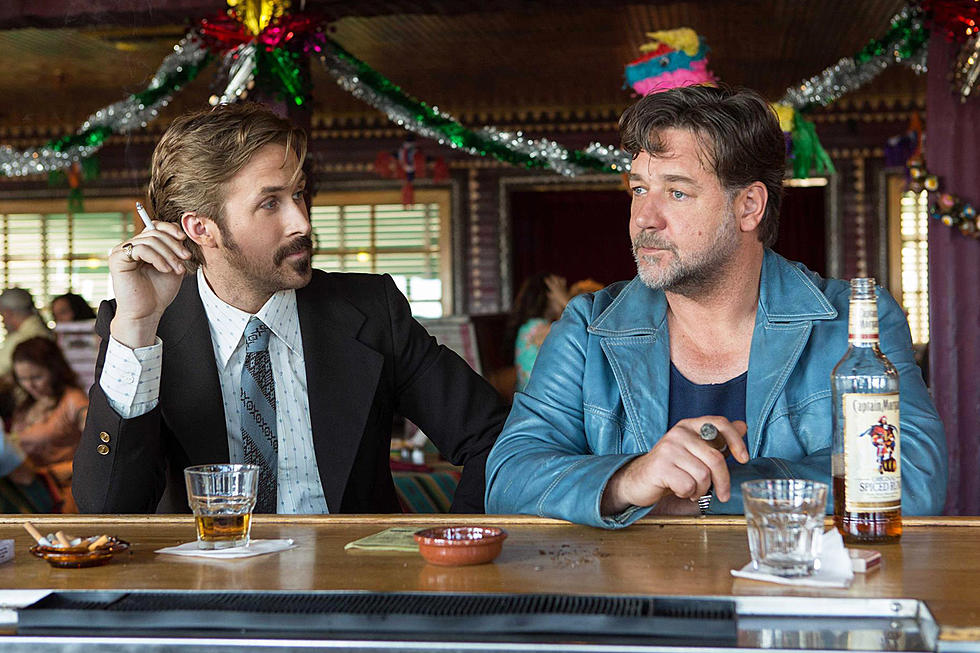
Throw Your Hands In the Air and Wave ‘Em Like You Just Don’t Care: Could Swaying in Unison Be the Future of Cinema?
Barry Grieff wants to change the way we watch movies. He wants to save the movie theater experience. He wants to turn the passive moviegoer into an active participant. And to do so, he wants people to shimmy around in their seats, move together unison, and throw self-conscious embarrassment to the wind, all in the name of fun.
To realize those dreams, Grieff and his company Audience Entertainment developed “Interactive Dimension.” This is what it looks like in action:
Yes, that was 100 businessmen raising their hands and navigating Donald Duck down a water slide. With industry talk openly fretting over the theater-going experience's bleak future, a taste of Interactive Dimension rings like a death knell. That's it. Cinema is over. Storytelling is kaput. Long live the new flesh — an era where men and cartoon characters live as one.
But, is that spine-tingling feeling a true premonition or a resistance to an ever-evolving technological medium? Instead of sticking with my gut reaction, I decided to voice my concerns directly to Grieff, an impassioned innovator who just wants audiences to have fun.
When did interactivity start looking like a plausible future for film?
For me, interactive content begins in 1985 with a program called Treasure: In Search of the Gold Horse, which I produced for Pioneer Laserdisc. It was the demonstration disc to showcase laser technology and interactivity. Nothing had been done like this before. The idea of engaging with the content started then. Even though it was a technology way ahead of its time, there were no laser disc players in the world. No one heard of it.
How did it work?
We buried a gold horse somewhere in United States. In the belly of the horse was a key to a safe deposit box with a $500,000 certificate of deposit. The way to find the horse was to solve the puzzles and riddles. The way you did that was by watching this interactive movie. You had to watch it fast, you had to watch it slow, you had to freeze frame because clues were hidden between frames. Some clues were in the language, some were in the pictures. It was all about watching things over and over. Now imagine a game that's told musically, where the clues and puzzles are in the music. You have to listen to it over and over. That makes a hit record.
Who won the money?
We donated it to charity. The puzzle was too hard. Someone did solve it. It was a five year puzzle and two guys solved it two weeks after it ended.
That sounds like something you'd do at home, not with hundreds of people at a movie theater.
You can do it both ways. A serialized version in the theaters because it's a story. Maybe it runs every Tuesday night. If you want to play and go for the prizes, you have to buy the DVD. You take that home and get deeper into it. Then you're ahead of the game. I think it'll lead to serialized content, evolving as they watch it.
How did this evolve into Interactive Dimension?
Fast forward ten years ago to when I was the CEO of a company called Grand Experience Lab. This was a lab in New York City that aggregated technologies from around the world, technologies that we believed had applications for marketers. So we had 3D printers, holography, motion capture — you name it, we had it 10, 15 years ago. So we brought in marketing executive teams from companies like Pepsi and Nokia, and show them the future, how to integrate them into the marketing strategy. We decided that, since our algorithms work for groups, not individuals, that we needed a network of places where large groups of people congregate. You have a great screen, fabulous picture, seats, popcorn, bathrooms — we just add interactivity and you have this environment. The plan was to link movie theaters around the world. You could do things in New York against Beijing, Rio against London, wherever we have it.
The participants look reluctant to engage with the game. Are you worried that what you're hoping people will take to exists outside the typical audience member's comfort zone?
Take a look at the videos and what you'll see is people actually start to work together. Here's the interesting result: Once they achieve a goal — driving a car down the street or something — they feel good. Research done afterward by the advertising company found that people who played games instead of watching ads liked the movie more than those who didn't.
Right now, most of the demos feature ads—
Yes, that's where it starts. What we envision is that when we release the software development kit so that developers can develop all sorts of content for it. Movie theaters could run different things. Tuesday nights they might run game night. We've spoken to big game companies and they've said, 'When you're on enough screens, we'd like to showcase the next games we'll release and they can play samples of them.' We could do midnight screenings of Rocky Horror with some kind of silly game where people in San Francisco take on Miami.
Do you think this plays across the demographics? The older men and women in the Donald Duck looked a little uncomfortable doing the wave.
You're right. If you come to see 'The King's Speech,' you probably won't do the Donald Duck thing. You'd be embarrassed. It'll be there for all the kid movies. And then there will be slightly more sophisticated things for people who see 'Transformers.' For people who see 'The King's Speech,' the interactivity may be entirely different, more intellectual games. One of the things we talked about with Fox was for a movie called 'Jumper.' We came up with this idea — and there weren't enough theaters so we couldn't do it — but you'd walk into the theater and as it's filling up, it'd be a blank screen, and you sit down, look up, and it looks like Samuel L. Jackson is sitting next to you. He'd be virtually on the screen, staring at you. When you look to your side, he vanishes and jumps to another seat. A little game. We also talked to them about 'Gulliver's Travels.' You walk into the theater and it looks like there are ropes hanging from the top of the screen. When you sit down, Lilliputians start crawling down the rope and land on your head. So you reach up virtually and the Lilliputians scurry away. It's in its infancy. What we're developing is a platform that will enable greater minds than ours to come up with things. We'll be like the app store.
Are the games growing in complexity? I could see quality impacting participation.
There are car racing games, racing against a computer or a clock. The theater with the best score could get ticket to the next movie or popcorn. The idea is that there's been a movement away from community towards individual stuff because of the phone. But there's interest in people gathering together — it's why they go to concerts and ball games. If we can give them some reason to work together, because they're the same gender or they're there for the same reason, then they have an interest in winning the game. I'd quarrel with your idea that people don't do that — there hasn't been an opportunity to do that. The second we give them the chance, they're all over it.
Interactive Dimension's press release notes that theater capacity is down 15% and this will alleviate the stress of theater owners. Why, because people will want to come play these games?
We're creating a platform enables a variety of forms of interactivity once it's installed. The idea is the movie theater is busy 15% of the week. The rest of the time it's empty. On a Saturday morning, a classroom of kids in Atlanta can compete in a spelling bee of sorts with a classroom of kids in New York. 30 kids can compete against 30 other kids. It's not Billy against Johnny. You're building community doing these things. This is what social media should be.
There's an on-going war between businessfolk who want to open up the theater experience and others hoping to preserve it. Interactive Dimension seems to be part of the “more is better” movement.
I've been an observer of the media changes for a long time. I saw the music business when it went from records to tapes to CDs to streaming — the forms of distribution, to some extent, dictate how you receive the media. The problem with the texting thing in the theaters is, when you go to watch a movie, you're there in a community environment with other people. If you saw 'Avatar' in 3D IMAX, that was a great experience. It's vastly different at home. There are things you want to be there for. Texting during the movie is a huge mistake. We think texting should be before the content and after. You'll be able to sign in and accumulate points, but the game itself will be played on the screen. We could add the phone, but that's not what the theater is about. You're in this place with spectacular visuals, 3D sound, some places have shaky chairs, all this stuff to create an environment to have fun in. We think we could contribute to that by making the screen interactive. You could be directing James Bond as he's skiing down the mountain. You could direct him to a black diamond rather than a green beginner's slope. We think there will be a category of content like that.
Have you talked to filmmakers about this technology?
Yes, and a bunch of them have said all that's holding them back is for us to be on enough screens where it's worth the time and effort. Just like 'Avatar.' It couldn't be made until there were enough screens that could play 3D. That's why 3D floundered for so long.
What's the game plan for the next 20 years of technology?
We want to be on 20,000 screens where all forms of engagement are possible. Gaming, storytelling, education, advertising, trailers — any of those things when it's the right way to do it. Most of the movies in 3D shouldn't be in 3D. We think true of any kind of technology. There was a movie called 'Sliding Doors' with Gwyneth Paltrow. That could be an interactive movie. They just don't have the mechanism.
More From ScreenCrush
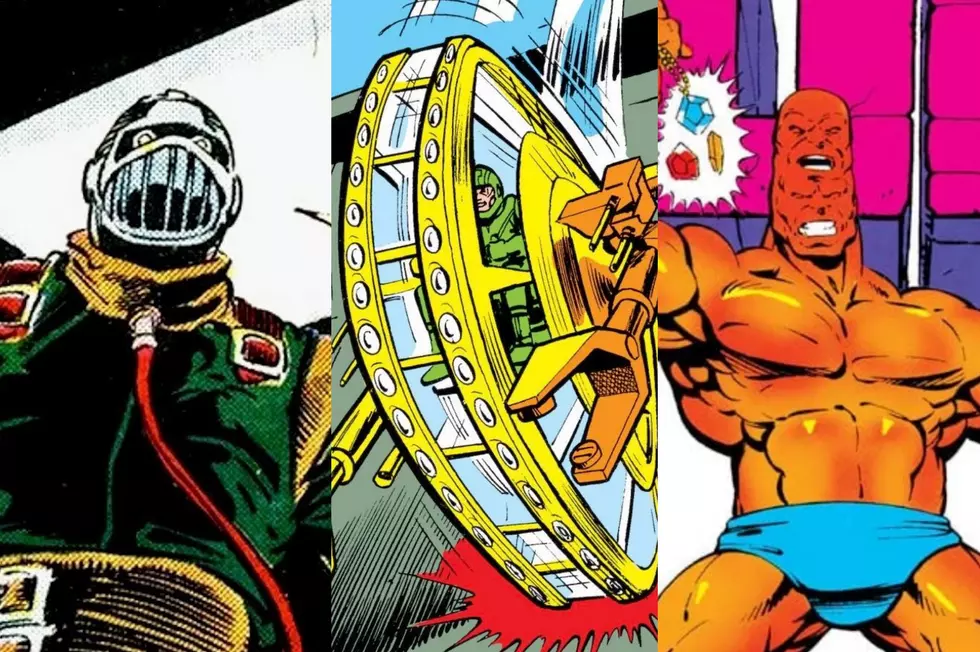


![Harrison Ford’s Spectacular $20 Million California Estate For Sale — See Inside! [Pictures]](http://townsquare.media/site/204/files/2024/04/attachment-harrison-ford-house-for-sale-pictures.jpg?w=980&q=75)
